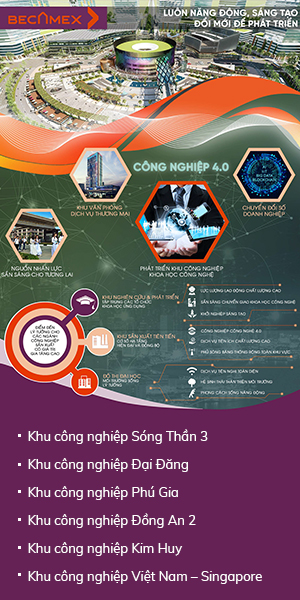
Footages of a short film promoting China are shown on the screens at the Times Square in New York, U.S.A., Jan. 17, 2011.
US benefits from Chinese marketStatistics from the Ministry of Commerce show that the United States has invested a total of 65.2 billion U.S. dollars in some 59,000 projects as of the end of 2010 in China, making China the profit engine for American business.
According to a survey the American Chamber of Commerce in China (AmCham-China) conducted last year, 71 percent of American business in China made profits in 2009 and 46 percent of the businesses interviewed said they had made more money invested in China than they did in other country or region.
Some leading American companies unveiled their new investment projects at the beginning of 2011. General Electric (GE), with a total investment of 2 billion U.S. dollars, plans to strengthen research and development, set up more innovation centers and open new joint ventures in China. Proctor and Gamble announced it would invest another 1 billion U.S. dollars in China in the next five years. Ford said it would expand production in China in 2011. Caterpillar plans to set up a new joint venture and expand its parts business in China. Starbucks set the target of opening 1,500 new shops on the Chinese mainland by 2015. The Carlyle Group announced it would create a kind of investment fund for China and increase investment in Chinese industries.
As America's second largest trading partner, China is also the market that has seen the fastest growth in export volume with the United States. According to the latest statistics by China's General Administration of Customs, China-U.S. trade totaled 385.3 billion U.S. dollars in 2010, an annual increase of 30 percent. In terms of the total trade volume, China's imports from the United States accounted for 102.04 billion U.S. dollars, a year-on-year increase of 31.7 percent.
Statistics from the U.S. Chamber of Commerce show that U.S. goods exports to China have jumped from 19.2 billion in 2001 to 71.5 billion U.S. dollars in 2008, an increase of 272 percent. However the increase was only 72 percent in terms of the exports to other countries and regions. In the services trade, the United States has been running a trade surplus with China. The United States registered a trade surplus of 7.43 billion dollars in 2009, four times higher than in 2001.
The United States benefited from China's rapid economic growth through exports to China, with all states having reaped tangible profits. China is among the top five largest export markets of 40 American states. There has been a 330 percent increase of America's manufacturing and agricultural exports to China, much higher than U.S. trade volume to other countries and regions, which stands merely at 29 percent.
China now has become the sole overseas market for U.S. beans and cotton and the key export market for its mechanical products, such as autos and planes. The report by the U.S.-China Business Council (USCBC) in 2010 said that China continues to be the key export destination for the U.S. manufacturing industry and agriculture. Zhou Shijian, a senior research fellow with the Center for U.S.-China Relations at Tsinghua University noted that Obama would hardly live up to his promise of doubling American exports in the next five years without increasing trade ties with China.
U.S. benefits from economic, trade cooperation with China overall
Economic and trade cooperation between the United States and China not only directly benefits U.S. exports and investments in China, but also contributes to America's extensive and tremendous macroeconomic interests, which are primarily represented by the large improvements to American consumers' way of life due to Chinese exports.
According to statistics, daily consumables, such as clothing, shoes, socks, toys, bags and electronic equipments, account for 75 percent of the Chinese goods entering the American market. All those Chinese goods, which are very competitive in both quality and price, greatly enrich the American people's lives and expand their choices, especially for those moderate and low-income citizens. At the same time, they help the United States to maintain lower inflation under the pressure of heavy "double deficits."
A study released by the American financial services firm Morgan Stanley shows Americans saved more than 300 U.S. dollars per capita by purchasing products from China in the year 2009. Another study launched by the USCBC shows the U.S. GDP increased by 0.7 percent higher than usual in 2010 due to increased U.S. trade and investment in China. Meanwhile, commodity prices will also drop 0.8 percent because of that. The sum of both effects is equal to adding 1,000 U.S. dollars to every American family's disposable income every year.
Liu Haiquan, the director of the Comprehensive Department of China's Ministry of Commerce, said: "Chinese goods can meet U.S. consumers' needs and are helpful for stabilizing prices of the American market, reducing the risk of inflation and maintaining the smooth operation of the economy."
Sino-U.S. economic and trade cooperation also increased the number of jobs in the United States. Gary Faye Locke, U.S. secretary of commerce, said in his speech at the USCBC in last October that "every 1 percent increase in exports to Asia will bring 100,000 jobs." He said nearly 2.6 million job opportunities were added in the country from 2001 to 2008 thanks to U.S. exports to China.
So far, China holds the largest amount of U.S. bonds. According to the U.S. Treasury, China held as much as 906.8 billion U.S. dollars of U.S. bonds by last October. During the global financial crisis, China did not sell those bonds but continued to buy them, which played an important role in maintaining a stable U.S. financial market. China's purchase of bonds strengthened liquidity, relieved the credit squeeze, accelerated trade financing and helped the U.S. to realize its macro-control targets.
Rational analyses of US complaints
Despite the fact that the United States has benefited substantially from Sino-U.S. economic and trade ties, it has continued to voice its discontent about China, especially on problems such as China's "excessive" trade surplus and the "undervalued" yuan.
According to historical data, China's trade surplus is neither long-lasting nor large. In most of the years that China recorded trade surplus, the figures were below 3 percent of GDP. China's trade surplus growth accelerated only after the year 2005 and compared with other trading powers including Germany and Japan, the surplus was not large.
It is notable that China's trade surplus with the United States does not mean damage to the latter's interests. In fact, China was not the only one that benefited from the trade. U.S.-based enterprises acquired most of the added value from products imported from China.
The Cato Institute, a libertarian research group based in Washington, D.C., said in a report published in 2010 that the division of labor between the China and the United States represent a smile curve. That is to say that the United States controls high-profit pre-production processes, including trademark and conceptual design as well as post-production services, such as logistics, sales and market development, while China only shoulders production and processing, which have very low added value.
Judging from the proportion of the benefit between the two parities, the United States gets the lion's share, according to the report.
Take Apple's iPod digital music player, which is labeled "Made in China" and sold for 299 U.S. dollars, for example. Manufacturing plants in China get only 4 U.S. dollars for processing, but the U.S.-based companies get 160 dollars from designing, logistics and sales sectors, according to an article published in the British magazine The Economist.
Yuan exchange rate is another big issue that affects Sino-U.S. trade cooperation. Some people in the United States believe the so-called "undervalued" yuan is the major cause of the trade imbalance between the two economies. They wish to expand U.S. exports and stimulate the domestic economy through the appreciation of yuan.
Since China began reforming the formation mechanism of the yuan exchange rate in 2005, the yuan climbed around 25 percent against the U.S. dollar. The appreciation rate of the yuan is the highest compared with the U.S. dollar, the euro, the Japanese yen and the British pound. The alleged relationship between the trade deficit and the "undervaluing of the yuan" has no foundation in fact.
During 2005 and 2008, when China's trade surplus rose rapidly, the yuan exchange rate against the U.S. dollar rose a total of 21.2 percent, said He Weiwen, director of the Sino-U.S. Trade Research Center with the University of International Business and Economics.
In addition to the trade surplus and yuan exchange rate issues, anti-dumping and countervailing probes are used by the United States to attack China. Intellectual property rights protection in China and the country's indigenous innovation policies are also under fire.
In recent years, trade disputes between the two economies have emerged quickly. If these problems cannot be addressed, not only the "Made in China" economy, but also the interests of U.S. enterprises and citizens will be damaged.
Both win if China, US cooperate on trade, economy
The United States is the largest developed country, and China is the largest developing country as well as the largest emerging market. China-U.S. economic and trade cooperation have brought enormous benefits to both countries.
The difference in the stages of development and the fact that the benefits each can offer the other are complementary serve as the foundation for the continued and stable development of Sino-U.S. economic and trade relations. In the process of economic globalization, the interests of China and the United States have mingled with each other. Development of mutually beneficial economic and trade relations between the two countries is in line with the fundamental interests of both peoples and will continue to be the cornerstone and the driving force of the development of bilateral relations.
There are broad prospects for China-U.S. economic and trade cooperation. China is in a period of accelerating industrialization and urbanization. It is quickening the transformation of economic growth and pushing ahead with the economic structure transformation. It takes the expansion of domestic demand — especially consumer demand — as the long-term strategy for economic development and the basic starting point.
This process will unleash huge investment demand and consumer demand during the 12th Five-Year Plan period. As the world's largest exporter and second largest importer, China is expected to become the world's largest domestic consumer market in 2020. This undoubtedly means better opportunities and greater development space for U.S. businesses.
Ruey-Bin Kao, Chairman, Motorola (China) Electronics (MCEL), said, Motorola had invested about 1.5 billion U.S. dollars in research and development in China. It has more than 2,700 research and development staff. He said: "The better China develops, the more opportunities we have. Motorola is very optimistic about the Chinese market and looks forward to participating in China's innovation."
General Electric, IBM, Coca-Cola and other large multinational companies are actively engaged in China's structural adjustment, energy saving and emission reduction strategies and offer support in these areas.
"The Chinese government will continue to implement trade policies committed to basic balance between imports and exports. It will further deepen the opening up; step up endeavors in reform and innovation and improve the degree of convenience to create a more optimized, more open investment environment for investors. Foreign enterprises, including those from the United States will share the cake of the growing market with the Chinese companies," an official with China's Commerce Ministry said.
Experts point out that the great achievements in Sino-U.S. economic and trade cooperation are hard won. The United States should adhere to the concept of free trade and oppose trade and investment protectionism in all forms. It needs to re-evaluate and relax export control measures against China as soon as possible.
Foreign investment review ought to be exercised reasonably in order to reduce unnecessary constraints and promote investment cooperation. It needs to continue to strengthen macroeconomic policy coordination with China to jointly promote balanced and sustainable development of the world economy.
The present period is crucial for the deepening of Sino-U.S. economic and trade relations. The development of healthy China-U.S. economic and trade relations will help promote stable economic growth in the two countries and global economic recovery. Only from a strategic and long-term perspective and through the continued promotion of Sino-U.S. economic and trade ties, can greater contributions to the two peoples and even the world be achieved.
At the new starting point, we are full of confidence in the future of economic and trade cooperation between China and the United States.
Xinhua/ (Source: People's Daily)


























